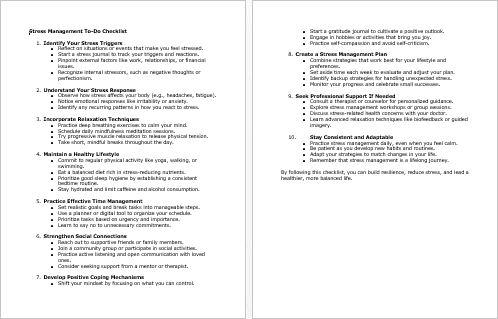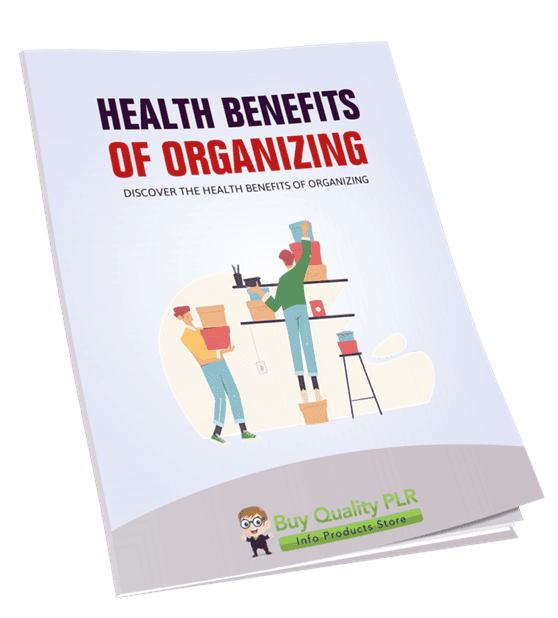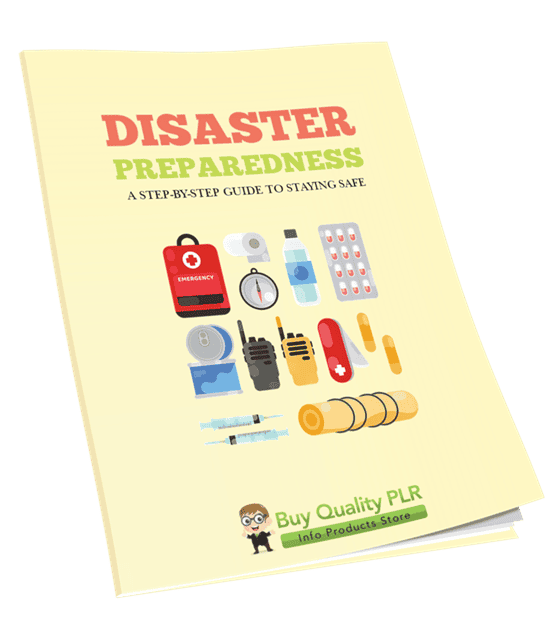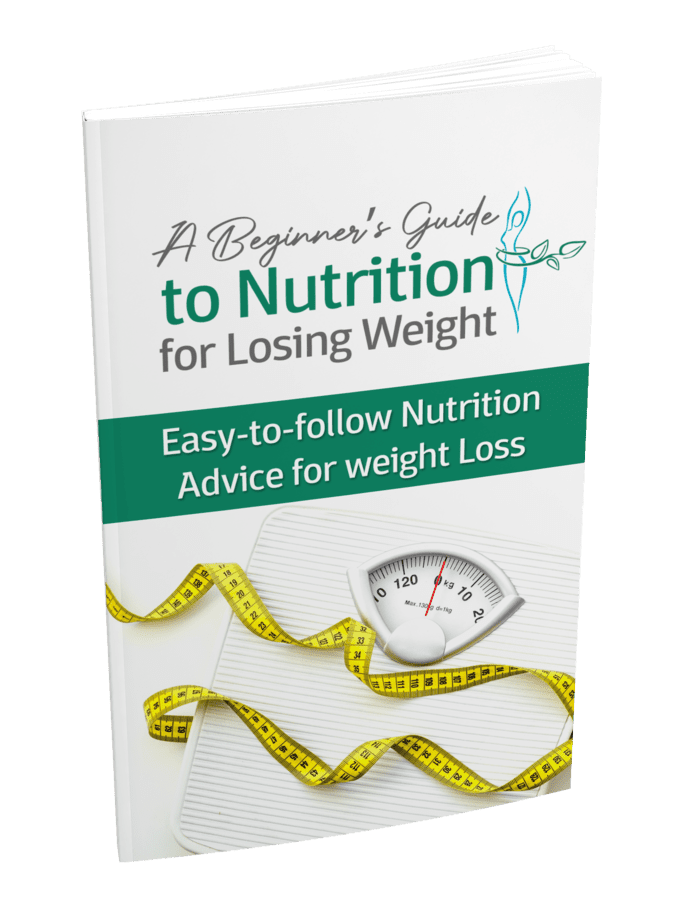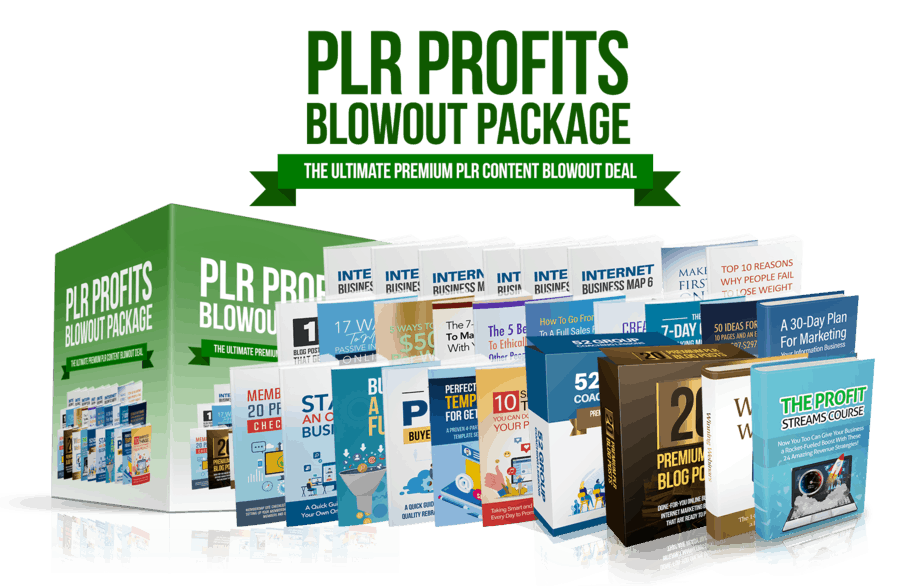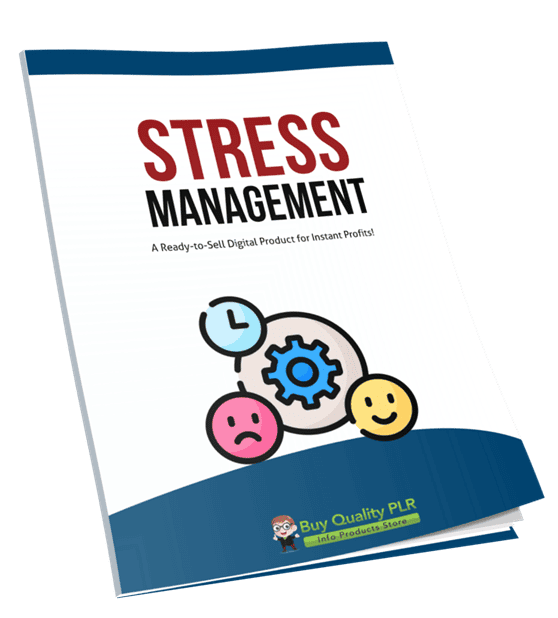
Stress Management PLR Course 22k Words
in PLR Checklists , PLR eBooks , PLR eCourses , PLR List Building Reports , Premium PLR , Premium PLR eBooks , Premium PLR Reports , Premium White Label Brandable PLR Coaching Courses , Private Label Rights Products , Self Care PLR , Self Improvement PLR , Self Improvement PLR Ebooks , Stress PLR , Stress PLR eBooksChoose Your Desired Option(s)
has been added to your cart!
have been added to your cart!
#stressmanagement #plrcourse #selfcare #mentalhealth #stressrelief #personaldevelopment #wellness #mindsetshift
Stress Management PLR Course – A Ready-to-Sell Digital Product for Instant Profits!
Empower Your Audience to Master Stress While Monetizing This Evergreen Niche!
Stress is a universal issue affecting millions worldwide, making stress management a highly sought-after skill. Whether it’s workplace pressure, personal responsibilities, or unexpected challenges, people need proven techniques to regain control, improve mental clarity, and live healthier lives.
With this Stress Management PLR Course, you get a professionally crafted, ready-to-sell digital product that helps individuals effectively manage stress—while allowing you to profit from this growing self-improvement industry.
Presenting…
Stress Management PLR Course 22k Words
Why Should You Invest in This PLR Course?
✔ Done-for-You & Ready to Sell – No need to research or write content—just brand it and launch your course!
✔ Highly Marketable Topic – Millions of professionals, entrepreneurs, and individuals struggle with stress daily.
✔ Multiple Monetization Opportunities – Sell it as a coaching program, digital course, or membership offer.
✔ Build Your Authority in the Self-Help Niche – Position yourself as an expert without spending hours creating content.
✔ Start Selling Immediately – Download, edit, and start profiting today!
What’s Inside the Stress Management PLR Course?
Module 1: Understanding Stress
Before tackling stress, we need to understand it. This module lays the foundation for managing stress effectively.
- Defining Stress & Its Impact – Learn about acute, chronic, and eustress (good stress).
- How Stress Affects the Body – From tension headaches to fatigue, understanding the physical toll.
- The Psychological Effects of Stress – Anxiety, irritability, and focus issues explained.
- The Science of Stress Responses – Learn about the fight-or-flight mechanism and how to counteract it.
Module 2: Identifying Stress Triggers
To manage stress, individuals must first identify its sources.
- Tracking Daily Stressors – A journaling exercise to pinpoint what’s causing stress.
- External Stressors – Work deadlines, financial concerns, and social pressures.
- Internal Stressors – Negative thought patterns, perfectionism, and self-imposed pressure.
- Recognizing Stress Patterns – How stress builds up over time and how to stop the cycle.
Module 3: Practical Stress-Relief Techniques
This module provides hands-on techniques for reducing stress in daily life.
- Breathing Exercises for Instant Calm – Learn deep breathing methods to reduce anxiety fast.
- Mindfulness & Meditation – How to stay present and let go of stress-inducing thoughts.
- Progressive Muscle Relaxation – Releasing tension through guided relaxation exercises.
- The Power of Taking Breaks – How short breaks throughout the day can boost productivity and well-being.
Module 4: Building Long-Term Stress-Reduction Habits
Developing healthy lifestyle habits helps prevent stress before it starts.
- Regular Exercise & Stress Reduction – Discover how movement lowers stress hormones.
- Nutrition for Mental Clarity – Foods that support brain function and reduce anxiety.
- The Importance of Quality Sleep – Strategies for deep, restorative sleep.
- Time Management & Prioritization – Setting realistic goals and avoiding overwhelm.
Module 5: Cultivating Resilience Against Stress
True stress management isn’t just about temporary relief—it’s about long-term resilience.
- Developing a Growth Mindset – Seeing stress as a challenge rather than an obstacle.
- Surrounding Yourself with Positive Relationships – The role of social support in stress relief.
- Practicing Gratitude & Mindset Shifts – Daily habits that create emotional resilience.
- Creating a Personalized Stress Management Plan – A structured roadmap for long-term stress relief.
How You Can Profit from This PLR Course
💰 Sell It as an Online Course – Start a stress management coaching program for individuals or businesses.
💰 Turn It Into a Digital eBook – Convert the course into a downloadable stress management guide.
💰 Offer It as a Workshop or Webinar – Host online masterclasses on stress reduction.
💰 Include It in a Membership Program – Add value to a subscription-based wellness site.
💰 Use It as a Lead Magnet for Your Self-Help Blog – Offer free content to grow your email list and upsell premium coaching services.
💰 Bundle It with Other Mental Health & Wellness Products – Combine it with mindfulness, anxiety relief, or productivity courses for a high-ticket bundle.
What’s Included in Your Stress Management PLR Package?
✅ Professionally Written Course (20,863 Words) – Comprehensive and structured for easy learning.
✅ Stress Management Checklist (439 Words) – A quick reference guide for daily stress reduction.
✅ Frequently Asked Questions (944 Words) – Answers to common stress-related concerns.
✅ High-Converting Sales Page (639 Words) – Ready-to-use copy to start selling immediately.
Why This PLR Course is a Smart Investment
🔹 Evergreen & Profitable Topic – Stress is a timeless issue with constant demand.
🔹 Wide Audience Appeal – From corporate professionals to students and parents, stress affects everyone.
🔹 Zero Content Creation Needed – Skip research, writing, and editing—just customize and sell.
🔹 Instant Monetization – Brand it, market it, and start selling as your own course today.
Start Selling This Course & Profit from the Wellness Industry Today!
The Stress Management PLR Course is a turnkey business opportunity for entrepreneurs, coaches, and digital product creators.
With high-value content, expert insights, and multiple monetization options, this course is a must-have for anyone in the self-help, wellness, or coaching niche.
No writing, no research, no hassle—just download, rebrand, and start selling!
👉 Get Instant Access & Start Profiting Today!
has been added to your cart!
have been added to your cart!
Here A Sample of Stress Management PLR Course
Welcome to the Stress Management course! Life can get overwhelming, but with the right tools and techniques, you can manage stress effectively. This course will walk you through understanding stress, identifying your triggers, and applying practical techniques to reduce stress in your daily life. By the end of this course, you’ll have a personal toolkit for managing stress and maintaining balance.
Module 1: Understanding Stress
Step 1: Define What Stress Is
Basic Definition of Stress and Its Types
Stress is your body’s natural response to challenges or demands. It’s the feeling you get when you’re faced with situations that require more energy or focus than usual. Stress is a part of life, and it affects everyone in different ways. It can be triggered by both positive and negative experiences.
There are three main types of stress that you’ll encounter:
1. Acute Stress
- Definition: This is short-term stress that comes from specific, immediate challenges or events.
- Examples: An approaching deadline, an important presentation, or a sudden change in plans.
- How it feels: It often causes a rush of energy, alertness, and focus. You may experience tension, worry, or a burst of motivation.
- Why it’s normal: Acute stress can be helpful in small doses because it pushes you to act quickly or make decisions under pressure. Once the situation passes, the stress usually fades away.
2. Chronic Stress
- Definition: This is long-term stress that happens when your body is in a state of tension or worry for extended periods, often without relief.
- Examples: Ongoing work pressure, relationship struggles, or financial problems.
- How it feels: Chronic stress can make you feel constantly overwhelmed, anxious, or irritable. You may experience physical symptoms like headaches, insomnia, or muscle tension.
- Why it’s harmful: When stress lasts for too long, it can negatively affect your health, leading to conditions like high blood pressure, heart disease, or mental health issues like anxiety or depression.
3. Eustress (Positive Stress)
- Definition: This is a type of stress that can be beneficial and motivating. It happens when you feel a sense of excitement or challenge that pushes you to perform at your best.
- Examples: Starting a new job, preparing for a big event, or going on a thrilling adventure.
- How it feels: Eustress often feels energizing and positive. It helps you stay focused and productive. The difference between eustress and distress (negative stress) is how you perceive it. If you see it as a challenge, it motivates you; if you see it as a threat, it can become overwhelming.
- Why it’s helpful: Eustress can enhance your performance and improve problem-solving abilities. It encourages growth, learning, and self-improvement.
In Summary:
- Acute stress is temporary and usually arises from immediate situations.
- Chronic stress is long-lasting and can harm your health if not managed.
- Eustress is the positive, motivating kind of stress that helps you perform well in challenging situations.
Understanding these types of stress will help you recognize how stress affects your life and how to manage it effectively.
Step 2: Recognize How Stress Affects Your Body
Discover how stress impacts your physical health, such as headaches, muscle tension, and fatigue.
How Stress Impacts Your Physical Health
Stress doesn’t just affect your emotions and thoughts; it has a significant impact on your body as well. When you’re stressed, your body goes into “fight or flight” mode, releasing hormones like adrenaline and cortisol to prepare you for action. While this is helpful in immediate, short-term situations, prolonged stress can cause a number of physical health problems. Let’s dive into some of the most common ways stress affects your physical health:
1. Headaches
- What Happens: Stress often causes muscle tension in your neck, shoulders, and scalp, which can trigger tension headaches.
- Why it Happens: When you’re stressed, your muscles tighten involuntarily, and this tension builds up over time. Chronic stress can also lead to migraines, which are severe headaches often triggered by stress, changes in sleep, or environmental factors.
- How It Feels: A dull, constant ache or a sharp, throbbing pain. Migraines can cause nausea, light sensitivity, and difficulty concentrating.
2. Muscle Tension
- What Happens: One of the body’s first responses to stress is muscle contraction. This tension is a natural part of the “fight or flight” reaction, but when it’s prolonged, it can lead to chronic muscle pain and discomfort.
- Why it Happens: Your body subconsciously prepares for action, tightening muscles to protect you. Over time, this tension doesn’t release, leading to stiffness, aches, and even muscle spasms.
- How It Feels: Tightness, soreness, and discomfort, especially in areas like your neck, shoulders, and back. You might feel fatigued or “tense” even after relaxing.
3. Fatigue
- What Happens: Chronic stress depletes your energy levels, leaving you feeling constantly tired, even if you get enough sleep.
- Why it Happens: The release of stress hormones like cortisol is meant to help you handle immediate stress, but over time, it can disrupt your normal sleep patterns and increase feelings of exhaustion. Your body also burns energy at a faster rate when you’re stressed, leaving you drained.
- How It Feels: Persistent tiredness, a lack of motivation, and difficulty staying alert, even after a full night’s sleep.
4. Digestive Issues
- What Happens: Stress can wreak havoc on your digestive system, leading to problems like stomach cramps, bloating, acid reflux, or even irritable bowel syndrome (IBS).
- Why it Happens: Stress hormones interfere with the normal functioning of your digestive tract, leading to slow digestion, increased stomach acid, and inflammation in the gut.
- How It Feels: Upset stomach, nausea, bloating, constipation, diarrhea, or heartburn.
5. Weakened Immune System
- What Happens: Chronic stress can lower your immune system’s ability to fight off illnesses, making you more susceptible to colds, flu, and infections.
- Why it Happens: Cortisol, the primary stress hormone, suppresses the production of white blood cells, which are critical for immune function.
- How It Feels: Frequent illnesses, slower recovery from colds or injuries, and more vulnerability to infections.
In Summary:
When you’re under stress, your body reacts by releasing hormones and increasing muscle tension. Over time, these responses can lead to physical health problems like headaches, muscle pain, fatigue, digestive issues, and a weakened immune system. Recognizing these physical symptoms of stress is the first step toward taking control and reducing its impact on your health.
Step 3: Understand How Stress Affects Your Mind
Explore the mental effects of stress, including anxiety, irritability, and difficulty concentrating.
The Mental Effects of Stress: How It Affects Your Mind
Stress doesn’t only take a toll on your body; it can also deeply affect your mind. When you’re stressed, your thoughts, emotions, and overall mental health are impacted. Chronic stress, in particular, can make it harder to think clearly, manage your emotions, and maintain a positive outlook. Let’s explore some of the key mental effects of stress:
1. Anxiety
- What Happens: Anxiety often arises when stress becomes overwhelming, making you feel worried or fearful about the future. Your brain may get stuck in a cycle of constant “what-if” thoughts, anticipating potential problems or challenges.
- Why it Happens: When you’re stressed, your body’s fight-or-flight response is activated, leading to heightened alertness and worry. If stress is prolonged, this constant state of readiness can evolve into chronic anxiety, where you feel anxious even without an immediate threat.
- How It Feels: Racing thoughts, nervousness, unease, or a general sense of impending doom. You may also experience physical symptoms like a fast heartbeat, shallow breathing, or dizziness.
2. Irritability
- What Happens: Stress can make you more sensitive to frustration or minor annoyances, leading to feelings of irritability or anger.
- Why it Happens: When you’re stressed, your emotional regulation can become impaired. The body’s stress hormones, such as cortisol, can increase emotional reactivity, making you more likely to overreact to small challenges or setbacks.
- How It Feels: Feeling easily upset, quick to anger, or snapping at others without meaning to. Small frustrations may feel disproportionately aggravating, and you may feel restless or on edge.
3. Difficulty Concentrating
- What Happens: One of the mental effects of stress is difficulty focusing on tasks or thinking clearly. When you’re stressed, your brain is overwhelmed with competing thoughts, making it hard to stay on track.
- Why it Happens: The brain’s resources are directed toward dealing with the stressor, leaving less energy for cognitive functions like concentration, memory, and decision-making. This can impair your ability to focus on everyday tasks or absorb new information.
- How It Feels: Feeling scatterbrained, easily distracted, or unable to complete tasks as efficiently as usual. You might forget things more often or feel like your mind is constantly racing.
4. Negative Thinking Patterns
- What Happens: Prolonged stress can lead to a negative mindset, where you start to see everything through a lens of pessimism or doubt. Your perception of yourself, others, and situations can become skewed.
- Why it Happens: Chronic stress can affect the balance of neurotransmitters in the brain, which are chemicals that regulate mood. This imbalance can make you more likely to focus on the negative aspects of situations and reinforce feelings of helplessness.
- How It Feels: A constant stream of negative thoughts, self-doubt, or an overwhelming sense of helplessness. You may struggle to see the positive side of things or feel like nothing will improve.
5. Decreased Motivation
- What Happens: Stress can sap your energy and drive, making it hard to stay motivated or inspired to tackle tasks, even the ones you normally enjoy.
- Why it Happens: When you’re stressed, your body’s energy is often focused on simply coping with the pressure, leaving little room for enthusiasm or motivation. Over time, this can lead to feelings of apathy or burnout.
- How It Feels: Lack of interest or enthusiasm in activities that usually excite you, procrastination, or putting things off because they feel overwhelming or too difficult to tackle.
In Summary:
Mental stress can make you feel anxious, irritable, or mentally foggy. When stress is chronic, it can lead to difficulty concentrating, negative thinking, and a lack of motivation. Recognizing these mental effects is important because it helps you understand how stress is influencing your thoughts and emotions. By managing stress effectively, you can start to reclaim control over your mental wellbeing, improving both your mood and your cognitive function.
Step 4: Learn the Stress Response Cycle
Understand the body’s “fight or flight” response to stress and how it affects your overall wellbeing.
Understanding the Body’s “Fight or Flight” Response to Stress
The body’s “fight or flight” response is a natural reaction to stress that prepares you to face a threat or danger. It’s an ancient survival mechanism that was crucial for our ancestors in the wild, allowing them to either fight predators or flee to safety. Today, while we may not be facing life-threatening situations on a daily basis, our bodies still react to stress in this way, whether the stress comes from work, relationships, or other challenges.
Let’s dive into what happens during the fight or flight response and how it affects your overall wellbeing:
1. Activation of the Stress Response
- What Happens: When your brain perceives a stressful situation, it triggers the release of stress hormones, such as adrenaline and cortisol, from your adrenal glands. These hormones signal your body to get ready for action—either to fight the threat or to run away from it.
- Why It Happens: This response is a survival mechanism that’s meant to help you react quickly in emergencies. The body gets ready to handle a challenge or danger, enhancing physical abilities like strength, focus, and endurance.
2. Physical Changes in the Body
- What Happens: The fight or flight response causes several immediate physical changes in the body:
- Increased heart rate and blood pressure: Your heart pumps faster to send oxygen and nutrients to your muscles.
- Rapid breathing: You take shallow, fast breaths to get more oxygen into your body.
- Dilated pupils: Your eyes widen to improve vision and awareness of your surroundings.
- Sweating: Your body sweats to help regulate temperature during physical exertion.
- Redirected blood flow: Blood is shunted away from non-essential areas (like digestion) and directed to muscles to help you react quickly.
- Increased heart rate and blood pressure: Your heart pumps faster to send oxygen and nutrients to your muscles.
- Why It Happens: These physical changes help prepare your body for immediate action—whether that’s fighting, running, or simply staying alert to a threat.
3. Short-Term Benefits of Fight or Flight
- What Happens: In the short term, the fight or flight response can be incredibly helpful. It boosts energy, increases focus, and sharpens awareness, allowing you to tackle the immediate stressor more effectively.
- Why It Helps: This response is designed to make you perform at your best in high-stakes situations, giving you the energy and attention needed to survive a perceived threat.
4. Long-Term Effects of Chronic Stress
- What Happens: While the fight or flight response is essential in short bursts, when stress becomes chronic, it can start to negatively affect your overall wellbeing. Continuous activation of the stress response can lead to:
- Increased heart disease risk: Prolonged high blood pressure and elevated heart rate can damage your cardiovascular system.
- Weakened immune system: Chronic stress reduces your immune system’s ability to fight off infections.
- Digestive issues: The body’s focus on survival causes digestion to slow down, which can lead to upset stomach, acid reflux, or constipation.
- Mental health struggles: Chronic stress contributes to anxiety, depression, and burnout, as your body is constantly in “high alert” mode.
- Increased heart disease risk: Prolonged high blood pressure and elevated heart rate can damage your cardiovascular system.
- Why It Happens: When stress is ongoing, the body’s resources (like energy and focus) are depleted over time, leaving you vulnerable to health problems.
5. Impact on Overall Wellbeing
- What Happens: The fight or flight response, when triggered constantly, wears down your physical and mental health. You may feel exhausted, overwhelmed, or disconnected, even when there is no immediate threat. This constant state of stress takes a toll on your overall wellbeing by affecting your body, mind, and emotional state.
- Why It Matters: Prolonged exposure to stress affects your quality of life, your relationships, and your ability to function effectively in daily tasks. It’s important to manage stress so that the fight or flight response doesn’t become a constant, harmful presence.
In Summary:
The fight or flight response is an automatic, helpful reaction to stress that prepares your body to face a threat. It increases energy, focus, and physical strength, which can be beneficial in the short term. However, when this response is activated too often, due to chronic stress, it can lead to long-term physical and mental health problems. Understanding this response can help you recognize how stress affects your body and why it’s so important to manage stress effectively for better overall wellbeing.
We’re also giving these extra bonuses
Stress Management – Checklist
Stress Management – FAQs

Stress Management – Salespage Content

Package Details:
Word Count: 20 863 Words
Number of Pages: 79
Stress Management – Bonus Content
Checklist
Word Count: 439 words
FAQs
Word Count: 944 words
Salespage Content
Word Count: 639 words
Total Word Count: 22 885 Words
Your PLR License Terms
PERMISSIONS: What Can You Do With These Materials?
Sell the content basically as it is (with some minor tweaks to make it “yours”).
If you are going to claim copyright to anything created with this content, then you must substantially change at 75% of the content to distinguish yourself from other licensees.
Break up the content into small portions to sell as individual reports for $10-$20 each.
Bundle the content with other existing content to create larger products for $47-$97 each.
Setup your own membership site with the content and generate monthly residual payments!
Take the content and convert it into a multiple-week “eclass” that you charge $297-$497 to access!
Use the content to create a “physical” product that you sell for premium prices!
Convert it to audios, videos, membership site content and more.
Excerpt and / or edit portions of the content to give away for free as blog posts, reports, etc. to use as lead magnets, incentives and more!
Create your own original product from it, set it up at a site and “flip” the site for megabucks!
RESTRICTIONS: What Can’t You Do With These Materials?
To protect the value of these products, you may not pass on the rights to your customers. This means that your customers may not have PLR rights or reprint / resell rights passed on to them.
You may not pass on any kind of licensing (PLR, reprint / resell, etc.) to ANY offer created from ANY PORTION OF this content that would allow additional people to sell or give away any portion of the content contained in this package.
You may not offer 100% commission to affiliates selling your version / copy of this product. The maximum affiliate commission you may pay out for offers created that include parts of this content is 75%.
You are not permitted to give the complete materials away in their current state for free – they must be sold. They must be excerpted and / or edited to be given away, unless otherwise noted. Example: You ARE permitted to excerpt portions of content for blog posts, lead magnets, etc.
You may not add this content to any part of an existing customer order that would not require them to make an additional purchase. (IE You cannot add it to a package, membership site, etc. that customers have ALREADY paid for.)
Share Now!

